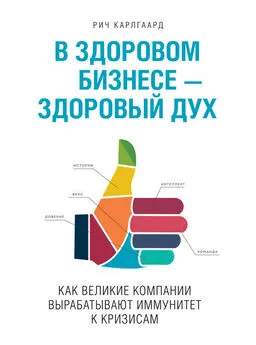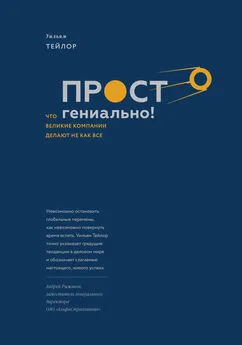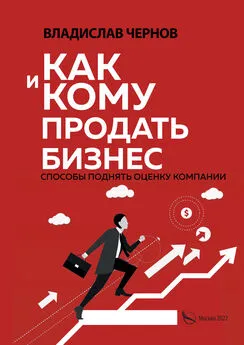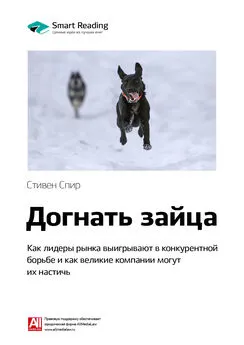Рич Карлгаард - В здоровом бизнесе – здоровый дух. Как великие компании вырабатывают иммунитет к кризисам
- Название:В здоровом бизнесе – здоровый дух. Как великие компании вырабатывают иммунитет к кризисам
- Автор:
- Жанр:
- Издательство:Array Литагент «МИФ без БК»
- Год:2015
- Город:Москва
- ISBN:978-5-00057-539-0
- Рейтинг:
- Избранное:Добавить в избранное
-
Отзывы:
-
Ваша оценка:
Рич Карлгаард - В здоровом бизнесе – здоровый дух. Как великие компании вырабатывают иммунитет к кризисам краткое содержание
На русском языке публикуется впервые.
В здоровом бизнесе – здоровый дух. Как великие компании вырабатывают иммунитет к кризисам - читать онлайн бесплатно полную версию (весь текст целиком)
Интервал:
Закладка:
15
W. Edwards Deming. Out of the Crisis. Cambridge, MA: MIT Press, 1986.
16
Amy Edmondson. Psychological Safety and Learning Behavior in Work Teams // Administrative Science Quarterly 44. № 2, 1999. Р. 350–383; Markus Baer, Michael Frese. Innovation Is Not Enough: Climates for Initiative and Psychological Safety, Process Innovations, and Firm Performance // Journal of Organizational Behavior 24. № 1, 2003. Р. 45–68; Ingrid M. Nembhard, Amy C. Edmondson. Making It Safe: The Effects of Leader Inclusiveness and Professional Status on Psychological Safety and Improvement Efforts in Health Care Teams // Journal of Organizational Behavior 27. № 7, 2006. Р. 941–966; Amy C. Edmondson. Psychological Safety, Trust, and Learning in Organizations: A Group-Level Lens // Trust in Organizations: Dilemmas and Approaches. 2004. Р. 239–274.
17
Filip Lievens, Charlie L. Reeve. Where I – O Psychology Should Really (Re) Start Its Investigation of Intelligence Constructs and Their Measurement // Industrial and Organizational Psychology 5. № 2, 2012. Р. 153–158.
18
Ian J. Deary, Lars Penke, Wendy Johnson. The Neuroscience of Human Intelligence Differences // Nature Reviews Neuroscience 11. № 3, 2010. Р. 201–211.
19
Ingrid M. Nembhard, Amy C. Edmondson. Making It Safe: The Effects of Leader Inclusiveness and Professional Status on Psychological Safety and Improvement Efforts in Health Care Teams // Journal of Organizational Behavior 27. № 7, 2006. Р. 941–966.
20
Kenneth M. Steele. Arousal and Mood Factors in the ‘Mozart Effect’ // Perceptual and Motor Skills 91. № 1, 2000. Р. 188–190; Sylvain Moreno, Carlos Marques, Andreia Santos, Manuela Santos, Mireille Besson. Musical Training Influences Linguistic Abilities in 8-Year-Old Children: More Evidence for Brain Plasticity // Cerebral Cortex 19. № 3, 2009. Р. 712–723.
21
Gerd Kempermann, Klaus Fabel, Dan Ehninger, Harish Babu, Perla Leal-Galicia, Alexander Garthe, Susanne A. Wolf. Why and How Physical Activity Promotes Experience-Induced Brain Plasticity // Frontiers in Neuroscience 4, 2010; Kristel Knaepen, Maaike Goekint, Elsa Marie Heyman, Romain Meeusen. Neuroplasticity – Exercise-Induced Response of Peripheral Brain-Derived Neurotrophic Factor // Sports Medicine 40. № 9, 2010. Р. 765–801.
22
Amy Edmondson, L. Feldman. Phase Zero: Introducing New Services at IDEO (A). Case study. Harvard Business School. 2006.
23
Natalie Sebanz, Harold Bekkering, Gunther Knoblich. Joint Action: Bodies and Minds Moving Together // Trends in Cognitive Sciences 10. № 2, 2006. Р. 70–76.
24
Robin I. M. Dunbar. The Social Brain: Mind, Language, and Society in Evolutionary Perspective // Annual Review of Anthropology. 2003. Р. 163–181.
25
Nicolai J. Foss, Siegwart Lindenberg. Teams, Team Motivation, and the Theory of the Firm // Managerial and Decision Economics 33. № 5–6, 2012. Р. 369–383.
26
Chris Argyris. Knowledge for Action: A Guide to Overcoming Barriers to Organizational Change. San Francisco: Jossey-Bass, 1993; Chris Argyris. Today’s Problems with Tomorrow’s Organizations // Journal of Management Studies 4. № 1, 1967. Р. 31–55; Deborah G. Ancona, David F. Caldwell. Bridging the Boundary: External Activity and Performance in Organizational Teams // Administrative Science Quarterly. 1992. Р. 634–665; Deborah Gladstein Ancona. Outward Bound: Strategies for Team Survival in an Organization // Academy of Management Journal 33. № 2, 1990. Р. 334–365; Deborah Ancona, Henrik Bresman, David Caldwell. The X-Factor: Six Steps to Leading High-Performing X-Teams // Organizational Dynamics 38. № 3, 2009. Р. 217–224; Amy Edmondson. Psychological Safety and Learning Behavior in Work Teams // Administrative Science Quarterly 44. № 2, 1999. Р. 350–383; Amy C. Edmondson, Richard M. Bohmer, Gary P. Pisano. Disrupted Routines: Team Learning and New Technology Implementation in Hospitals // Administrative Science Quarterly 46. № 4, 2001. Р. 685–716.
27
Jeffrey F. Rayport. The Miracle of Memphis // MIT Technology Review, December 20, 2010 // ( ссылка).
28
Elizabeth Mannix, Margaret A. Neale. What Differences Make a Difference? The Promise and Reality of Diverse Teams in Organizations // Psychological Science in the Public Interest 6. № 2, 2005. Р. 31–55.
29
Daphna Oyserman, Larry Gant, Joel Ager. A Socially Contextualized Model of African American Identity: Possible Selves and School Persistence // Journal of Personality and Social Psychology 69. № 6, 1995. Р. 1216.
30
Thomas Kochan, Katerina Bezrukova, Robin Ely, Susan Jackson, Aparna Joshi, Karen Jehn, Jonathan Leonard, David Levine, David Thomas. The Effects of Diversity on Business Performance: Report of the Diversity Research Network // Human Resource Management 42. № 1, 2003. Р. 3–21.
31
Mannix, Neale. What Differences Make a Difference?
32
В настоящее время доступно множество книг о командах и работе в команде. Вот несколько лучших: Ленсиони П. Пять пороков команды. Притчи о лидерстве. М.: Манн, Иванов и Фербер, 2011; Катценбах Д., Смит Д. Командный подход. Создание высокоэффективной организации. М.: Альпина Паблишер, 2013; J. Richard Hackman. Leading Teams: Setting the Stage for Great Performances. Boston: Harvard Business Press, 2002; Joe Frontiera, Daniel Leidl. Team Turnarounds: A Playbook for Transforming Underperforming Teams. New York: Wiley, 2012.
33
Во многих работах исследовались стереотипы, связанные с возрастом, особенно по отношению к идее изменений: Warren CK Chiu, Andy W. Chan, Ed Snape, Tom Redman. Age Stereotypes and Discriminatory Attitudes Towards Older Workers: An East-West Comparison // Human Relations 54. № 5, 2001. Р. 629–661; Barbara L. Hassell, Pamela L. Perrewe. An Examination of Beliefs About Older Workers: Do Stereotypes Still Exist? // Journal of Organizational Behavior 16. № 5, 1995. Р. 457–468; Philip Taylor, Alan Walker. Employers and Older Workers: Attitudes and Employment Practices // Ageing and Society 18. № 6, 1998. Р. 641–658.
34
Teresa A. Amabile, Mukti Khaire. Creativity and the Role of the Leader. Boston: Harvard Business Press, 2008.
35
Мне не удалось взять интервью у профессора Пентланда для данного раздела моей книги. Однако, зная, что его работы блестящи и актуальны, я решил положиться на другие прекрасные статьи, заметки и блоги, относящиеся к данной теме. Среди них: Mark Buchanan. Secret Signals: Does a Primitive, Non-Linguistic Type of Communication Drive People’s Interactions? // Nature 457. № 7229, 2009. Р. 528–530; Mark Buchanan. The Science of Subtle Signals: The Most Successful Telephone Call Center Operators Have the Same Kind of Rhythm in Their Voices as a Mother Speaking Singsong to a Baby. That’s One of Many New Insights Emerging from the Use of Sensors and Tracking Devices Within Corporate Walls // Strategy and Business 48, 2007. Р. 68. Цитата из данного раздела взята из статьи: Anne Eisenberg. You May Soon Know If You’re Hogging the Discussion // New York Times, October 25, 2008 // ( ссылка).
36
Alex «Sandy» Pentland. The Hard Science of Teamwork. HBR Blog Network (blog) // Harvard Business Review, March 20, 2012 // ( ссылка).
37
Andy Greenberg. Mining Human Behavior at MIT // Forbes, August 12, 2010 // ( ссылка).
38
Alex „Sandy“ Pentland. To Signal Is Human: Real-Time Data Mining Unmasks the Power of Imitation, Kith and Charisma in Our Face-to-Face Social Networks // American Scientist 98, 2010.
39
N. Millard. Learning from the ‘Wow’ Factor – How to Engage Customers Through the Design of Effective Affective Customer Experiences // BT Technology Journal 24. № 1, 2006. Р. 11–16.
40
Обратите особое внимание на следующие публикации: Ravindra Chitturi, Rajagopal Raghunathan, Vijay Mahajan. Form Versus Function: How the Intensities of Specific Emotions Evoked in Functional Versus Hedonic Trade-Offs Mediate Product Preferences // Journal of Marketing Research, 2007. P. 702–714.
41
Chitturi, Raghunathan, Mahajan. Form Versus Function.
42
Данный факт был установлен во многих исследованиях, например: Daniel E. Berlyne. Ends and Means of Experimental Aesthetics // Canadian Journal of Psychology/Revue canadienne de psychologie 26. № 4, 1972. Р. 303; Raji Srinivasan, Gary L. Lilien, Arvind Rangaswamy, Gina M. Pingitore, Daniel Seldin. The Total Product Design Concept and an Application to the Auto Market // Journal of Product Innovation Management 29. S1, 2012. Р. 3–20; Robert W. Veryzer. A Nonconscious Processing Explanation of Consumer Response to Product Design // Psychology & Marketing 16. № 6, 1999. Р. 497–522.
43
Jo Piazza. Audiences Experience „Avatar“ Blues // CNN Entertainment. January 11, 2010 // ( ссылка).
44
Данная история основывается на материалах статьи: John Bryant. Sinyard the Obsessed // Bicycling, December 8, 2013 // ( ссылка).
45
Karen McVeigh. Why Golden Ratio Pleases the Eye: US Academic Says He Knows Art Secret // Guardian, December 28, 2009 // ( ссылка); Lance Hosey. Why We Love Beautiful Things // New York Times, February 15, 2013 // ( ссылка); Adrian Bejan, Sylvie Lorente. The Constructal Law and the Evolution of Design in Nature // Physics of Life Reviews 8. № 3, 2011. Р. 209–240.
46
Moshe Bar, Maital Neta. Humans Prefer Curved Visual Objects // Psychological Science 17. № 8, 2006. Р. 645–648; Moshe Bar, Maital Neta. Visual Elements of Subjective Preference Modulate Amygdala Activation // Neuropsychologia 45. № 10, 2007. Р. 2191–2200.
47
Albert T. Poffenberger, B. E. Barrows. The Feeling Value of Lines // Journal of Applied Psychology 8. № 2, 1924. Р. 187; Kate Hevner. Experimental Studies of the Affective Value of Colors and Lines // Journal of Applied Psychology 19. № 4, 1935. Р. 385.
48
Bianca Grohmann, Eric R. Spangenberg, David E. Sprott. The Influence of Tactile Input on the Evaluation of Retail Product Offerings // Journal of Retailing 83. № 2, 2007. Р. 237–245; Lawrence E. Williams, John A. Bargh. Experiencing Physical Warmth Promotes Interpersonal Warmth // Science 322. № 5901, 2008. Р. 606–607.
Читать дальшеИнтервал:
Закладка:





![Рич Карлгаард - Поздний расцвет [Как взрослым добиться успеха в мире, одержимом ранним развитием] [litres]](/books/1070509/rich-karlgaard-pozdnij-rascvet-kak-vzroslym-dobit.webp)




